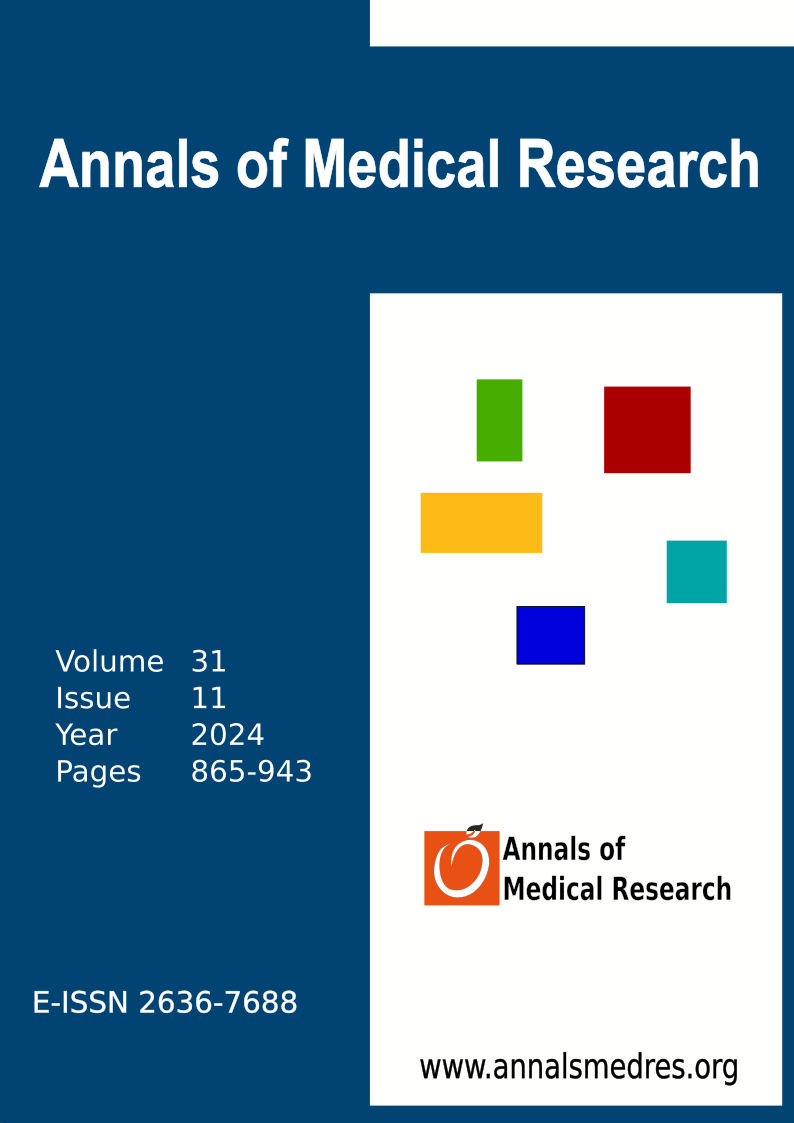Evaluation of patients who underwent computed tomography angiography with the pre-diagnosis of pulmonary embolism
Keywords:
Pulmonary embolism, Troponin, Monocytes, TomographyAbstract
Aim: Pulmonary embolism (PE) is a disease that develops as a result of occlusion of the pulmonary artery or its divisions by thrombus deriving from the systemic deep venous system. PE ranks third among deaths caused by cardiovascular disease. PE is a preventable illness with elevated mortality and morbidity, repetitive and hard to diagnose. In this study, computed tomography angiography (CTA) images and blood parameters of patients who underwent CTA with a prediagnosis of PE in Adıyaman Training and Research Hospital between 01/03/2020-01/09/2022 were examined.
Materials and Methods: Patients who underwent CTA with suspected PE were analyzed, and a comparison was made between the sociodemographic and laboratory data of those diagnosed with PE and those who were not.
Results: The mean age of PE patients was importantly higher than non-PE patients, and there was no statistical variance in the gender distribution of the groups. Monocyte count was markedly higher in the PE group, and the CAR value remarkably higher in the non-PE group than in the PE group. According to the ROC analysis, the AUC value was the highest when the D-dimer and troponin I value were considered together. Two different cut-offs were found for D-dimer. When D-dimer was 655 mg/dL, the specificity was 96.5%, while when D-dimer was 438.5 mg/dL, the sensitivity was 92.2%. The highest specificity was found with troponin I (97.4%). The likelihood ratio (LR) was the highest, at 26.08, when D-dimer was 655 mg/dL and above.
Conclusion: As a result, the main message of our study is that when making differential diagnosis in patients who apply to the emergency department with dyspnea and chest pain, better diagnostic accuracy can be achieved with the combined evaluation of tomographic findings and laboratory findings. Therefore, evaluation of laboratory values such as D-dimer, hemogram parameters and troponin I is important in diagnosis and risk classification.
Downloads
Published
Issue
Section
License
Copyright (c) 2024 Annals of Medical Research

This work is licensed under a Creative Commons Attribution-NonCommercial-NoDerivatives 4.0 International License.
CC Attribution-NonCommercial-NoDerivatives 4.0






